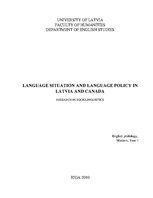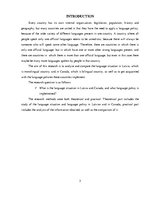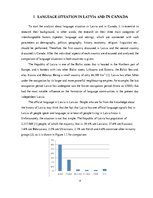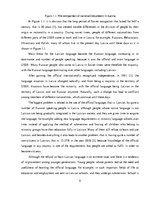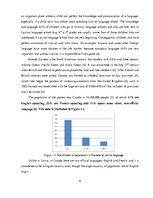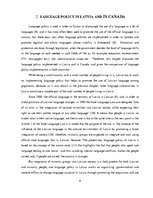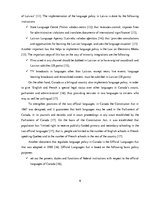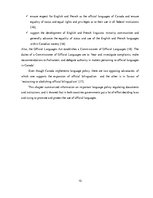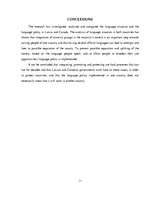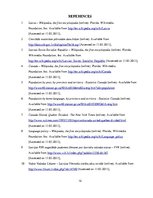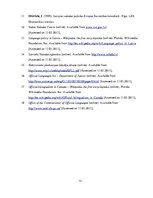-
Language Situation and Language Policy in Latvia and Canada
| Nr. | Sadaļas nosaukums | Lpp. |
| INTRODUCTION | 2 | |
| 1. | LANGUAGE SITUATION IN LATVIA AND IN CANADA | 3 |
| 2. | LANGUAGE POLICY IN LATVIA AND IN CANADA | 7 |
| CONCLUSIONS | 10 | |
| REFERENCES | 11 |
Also, the Official Languages Act establishes a Commissioner of Official Languages [18]. The duties of a Commissioner of Official Languages are to ‘hear and investigate complaints, make recommendations to Parliament, and delegate authority in matters pertaining to official languages in Canada’.
Even though Canada implements language policy, there are two opposing advocacies, of which one supports the expansion of official bilingualism and the other is in favour of ‘restraining or abolishing official bilingualism’ [17].
This chapter summarized information on important language policy regulating documents and institutions, and it showed that in both countries governments put a lot of effort deciding laws and trying to promote and protect the use of official languages.
CONCLUSIONS
The research has investigated, analyzed and compared the language situation and the language policy in Latvia and Canada. The analysis of language situation in both countries has shown that integration of minority groups in the majority’s society is an important step towards uniting people of one country and that having several official languages can lead to attempts and later to possible separation of the county. To prevent possible separation and splitting of the society, based on the language people speak, and to allow people to broaden their job opportunities, language policy is implemented.
It can be concluded that integrating, promoting and protecting are hard processes that can last for decades and that Latvian and Canadian governments work hard on these issues, in order to protect countries, and that the language policy implemented in one country does not necessarily mean that it will work in another country.
…
Language Situation and Language Policy in Latvia and Canada The aim of this research is to analyze and compare the language situation in Latvia and Canada, as well as to get acquainted with the language policies these countries implement. Research in Sociolinguistics

